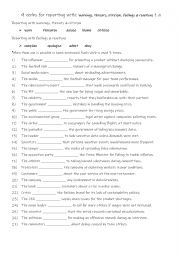
|
9 verbs for reporting with warnings, threats, criticism, feelings & reactions 1 a
First, students need to familiarise themselves with the verbs and check their meaning and use. Then they read the sentences to see which verb is needed to complete the sentence. Each verb is used 3 times! Answers on page 2.
Level: intermediate
Age: 10-100
Type:
Downloads: 108
|
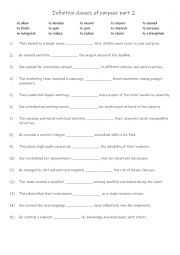
|
B1+-B2 Infinitive clauses of purpose 2
Infinitive Clauses of Purpose are used to explain the reason for or purpose of an action. These clauses are often introduced by the infinitive form of the verb ("to" + verb) and provide clarity and directness to communication. Learning to use infinitive clauses correctly helps you express intentions in a precise and formal manner. Infinitive clause...
Level: intermediate
Age: 10-100
Type:
Downloads: 102
|
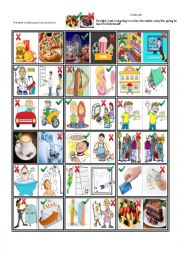
|
Present Continuous Future Tense. Correct the planned actions.
An enjoyable speaking and writing supplement to reinforce asking questions, answering using both affirmative and negative sentences. To get a mixture of both oral and written work I normally have something small enough to hide in my hand. If the object is in the hand not selected, they have to write the sentence. To encourage students, I usually gi...
Level: elementary
Age: 9-100
Type: worksheet
Downloads: 271
|
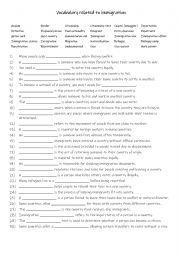
|
B1+-B2 Vocabulary related to immigration
Students familiarise themselves with the 30 words and their meanings, then they read the definitions to work out and write in the space provided which one is being described. Answers on page 2.
Level: intermediate
Age: 10-100
Type:
Downloads: 118
|
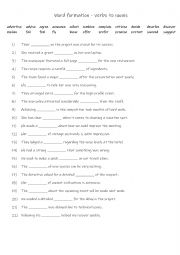
|
A2+-B1 Word formation - verbs to nouns
Being familiar with different word forms allows students to express themselves more precisely and flexibly. For example, instead of just using the verb create, they can use the noun creation to discuss the result of the action.Students make nouns from the verbs in bold. Then they read the sentences and complete it with the missing noun. Answers on ...
Level: intermediate
Age: 10-100
Type: worksheet
Downloads: 135
|
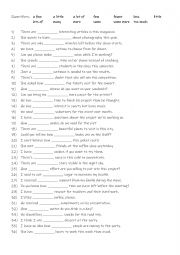
|
A2-B1 Practise with 13 quantifiers
Students familiarise themselves with the 13 quantifiers and their usage. Then they read the sentences to see which one is suitable to complete the gap-fill. Answers on page 2.
Level: elementary
Age: 9-100
Type:
Downloads: 102
|
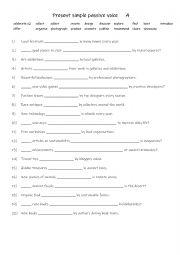
|
Present simple passive voice 4
Learning the present simple passive voice helps students focus on the action or the recipient, rather than the doer. It�s useful when the doer is unknown, unimportant, or to emphasize the object. Mastering this structure improves clarity, variety in sentence construction, and is essential for formal or academic communication. Students complete the ...
Level: elementary
Age: 9-100
Type:
Downloads: 126
|
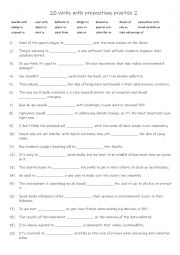
|
B1-B2 20 verbs with prepositions practice 2
Students should learn verb + and preposition phrasal verbs combinations because they are essential for effective communication in both spoken and written English. These expressions help students speak more naturally and fluently, making them sound more like native speakers. They also improve comprehension, as many of these phrases have meanings tha...
Level: intermediate
Age: 10-100
Type:
Downloads: 104
|
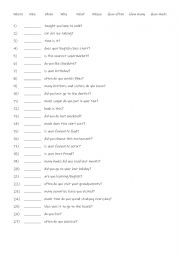
|
What is the question?
Students read the questions to see / work out which of the 9 given question words is needed to complete the question. After completing this exercise, students in pairs or small groups could use this worksheet for a speaking reinforcement activity. Answers on page 2.
Level: elementary
Age: 9-100
Type: worksheet
Downloads: 120
|
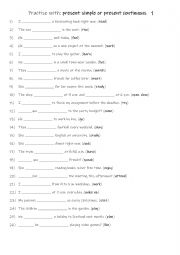
|
A1-A2 Practise with present simple or present continuous 1
Students should practice the present simple and present continuous tenses because they help distinguish between routines or facts (present simple) and ongoing or temporary actions (present continuous). Mastery of these tenses boosts confidence in daily conversations, ensures clarity in expressing different types of actions, and forms a foundation f...
Level: elementary
Age: 8-100
Type:
Downloads: 113
|












